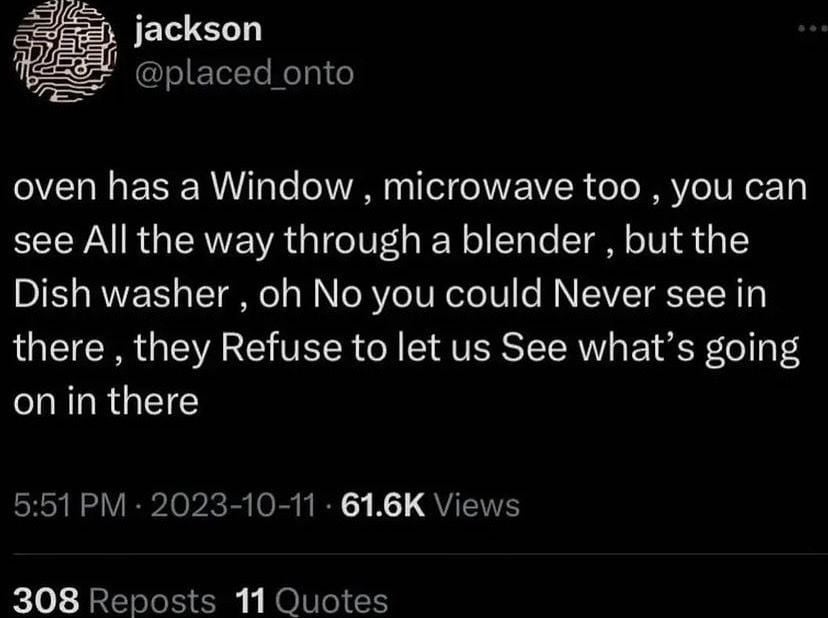this post was submitted on 09 Jul 2024
1021 points (98.7% liked)
People Twitter
5943 readers
2576 users here now
People tweeting stuff. We allow tweets from anyone.
RULES:
- Mark NSFW content.
- No doxxing people.
- Must be a pic of the tweet or similar. No direct links to the tweet.
- No bullying or international politcs
- Be excellent to each other.
- Provide an archived link to the tweet (or similar) being shown if it's a major figure or a politician.
founded 2 years ago
MODERATORS
you are viewing a single comment's thread
view the rest of the comments
view the rest of the comments

Dishwasher is regularly recirculating dirty, greasy water before rinsing. In order to save water, it just cycles the water with all the dirt through the dishes again, many times over. And only then rinses with a pure one.
I know how dishwasher works. I mean I don't see why I wouldn't want to look at that. It is interesting regardless.
An average person doesn't want to see this and doesn't know it happens, which would potentially tank the reviews for the device.
Most people prefer ignorance to seeing their flatware get sprayed with filthy water. They'd say "eww that's disgusting" and hand wash everything from now on.
It's because of this recirculation that dishwashers consume significantly less water than hand washing.
But people use same water when handwashing too. One sinkful of soapy water first where you wash them, then a sinkful of clean water for rinsing and put them in the drying rack to dry. I believe the significantly is a debatable.
Modern dishwashers have to use less than 5 gallons of water for a normal load. To get the Energy Star rating, that has to be 3 gallons.
A typical two-basin, 33 inch kitchen sink, each basin measures 16in x 14in. Each inch of depth in each basin is approximately 1 gallon. To fill up both basins to a depth of 5 inches, that would take 9.6 gallons, more than 3x more than an Energy Star dishwasher.
So yes, significantly.
They rinse for like 15 minutes, then pump that off and get new water for the water, pump that off, and get a clean rinse.